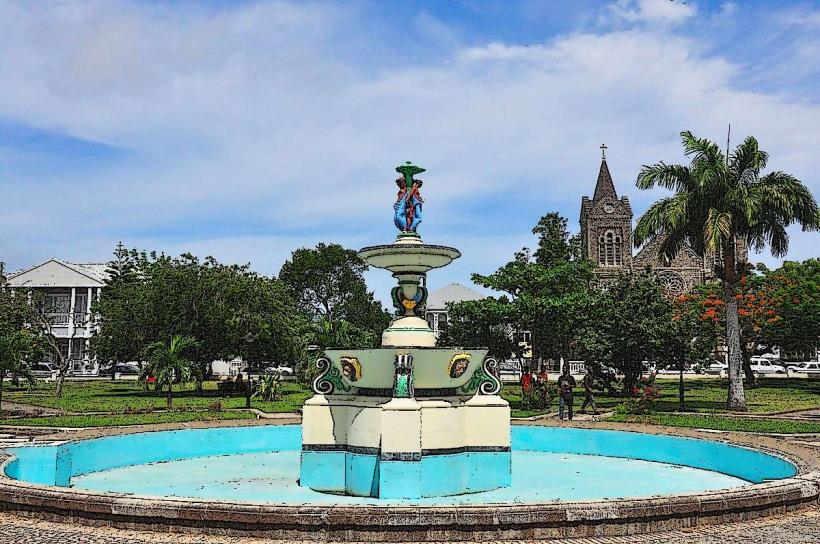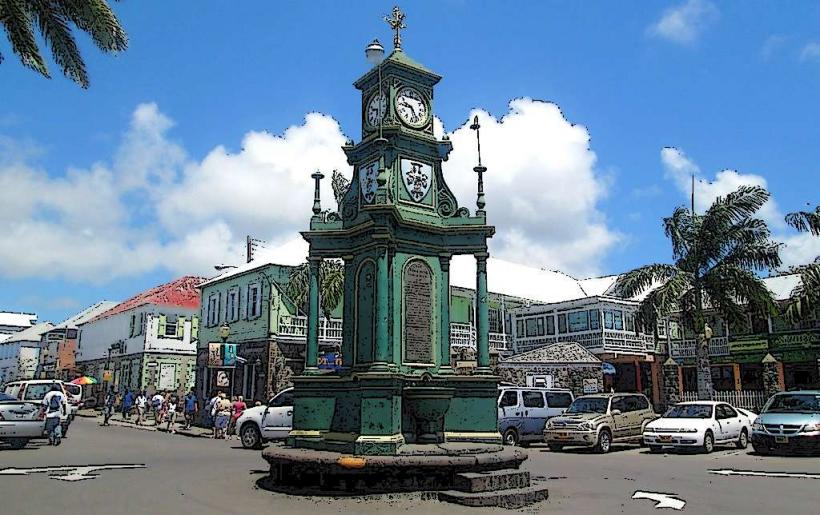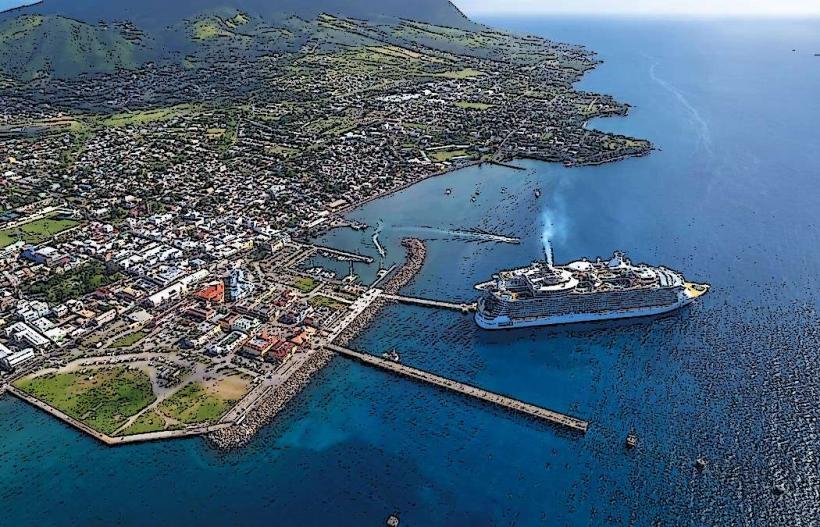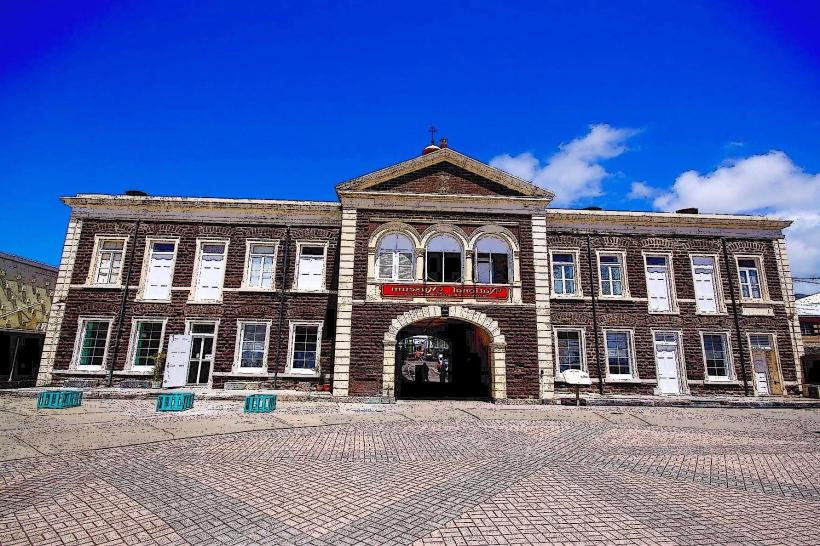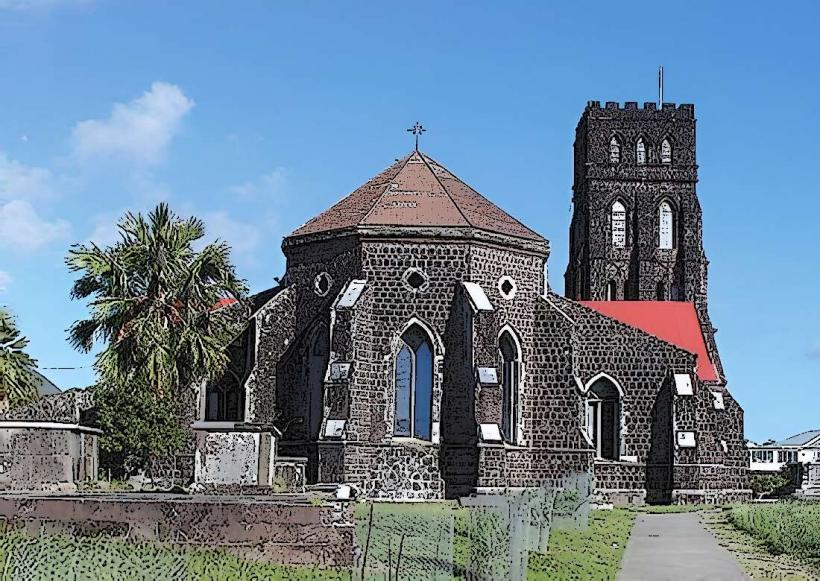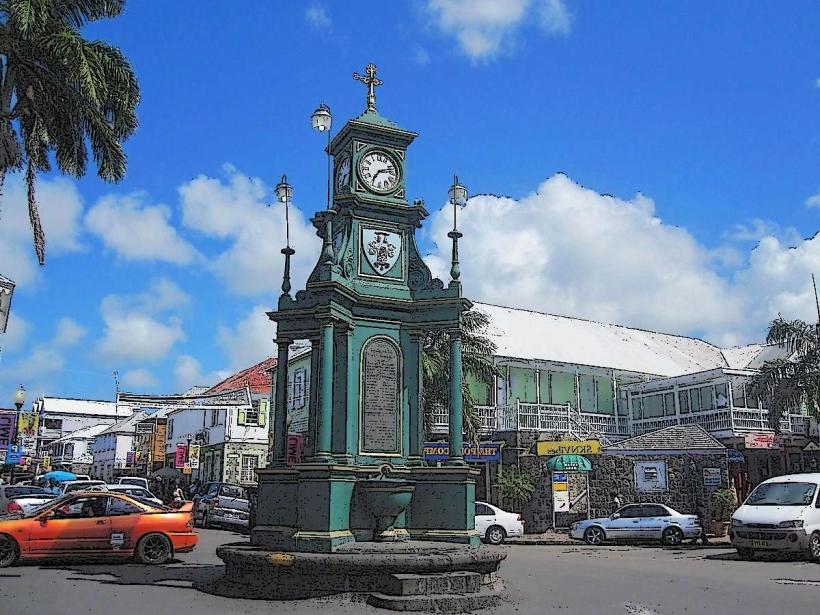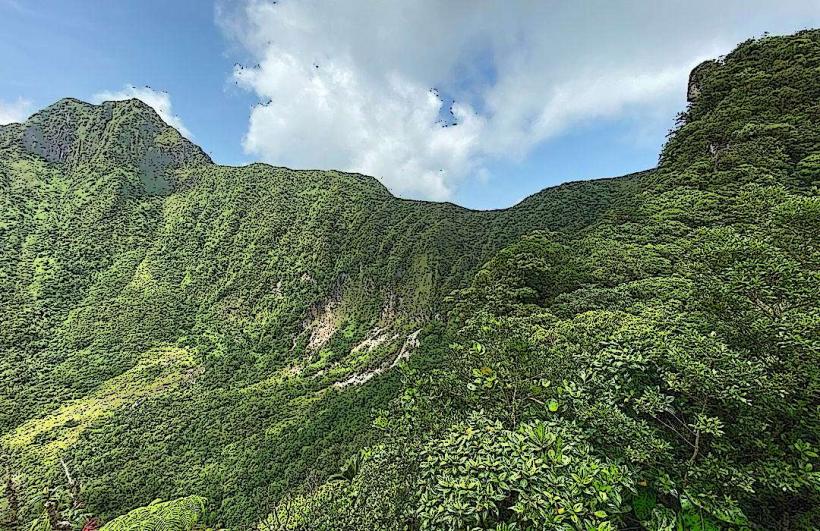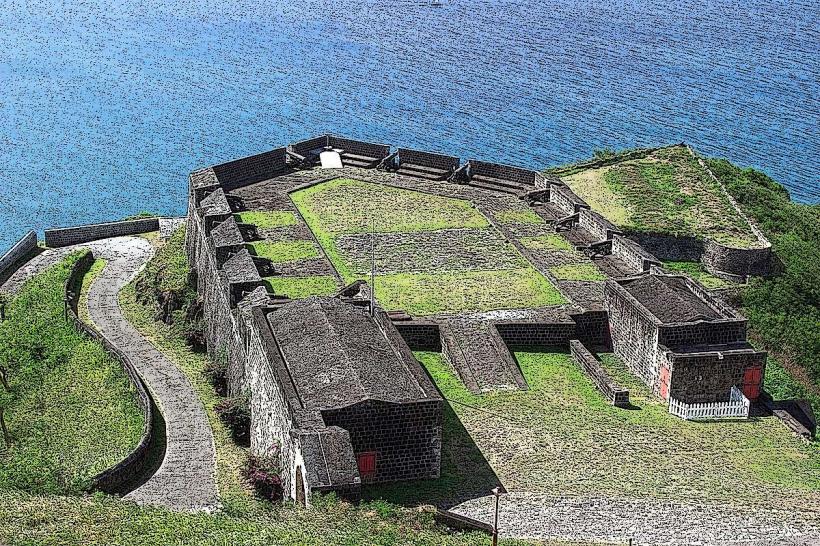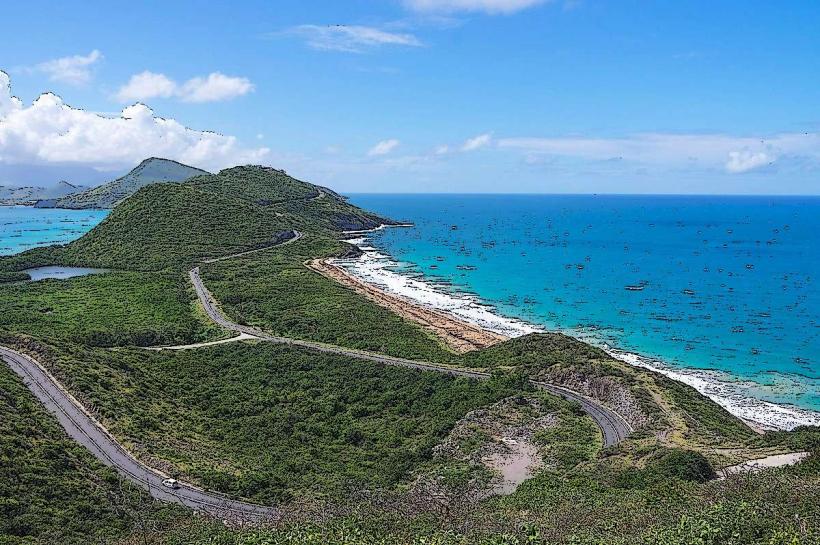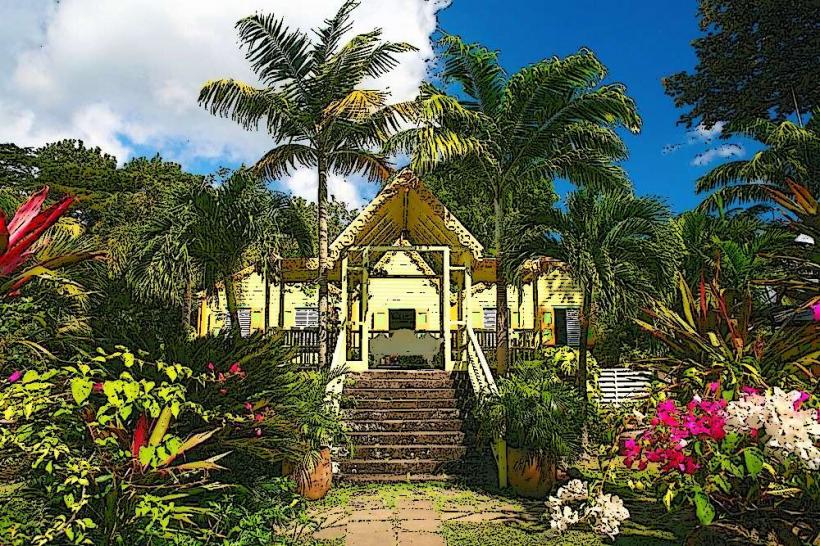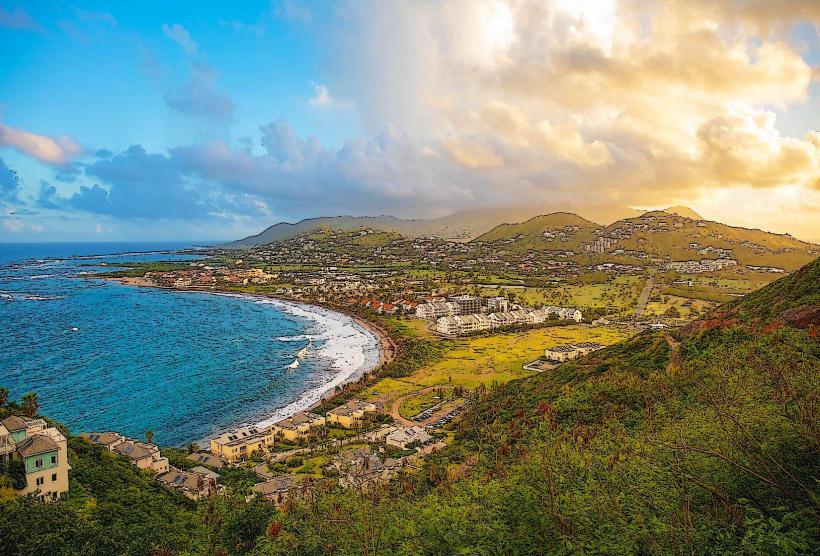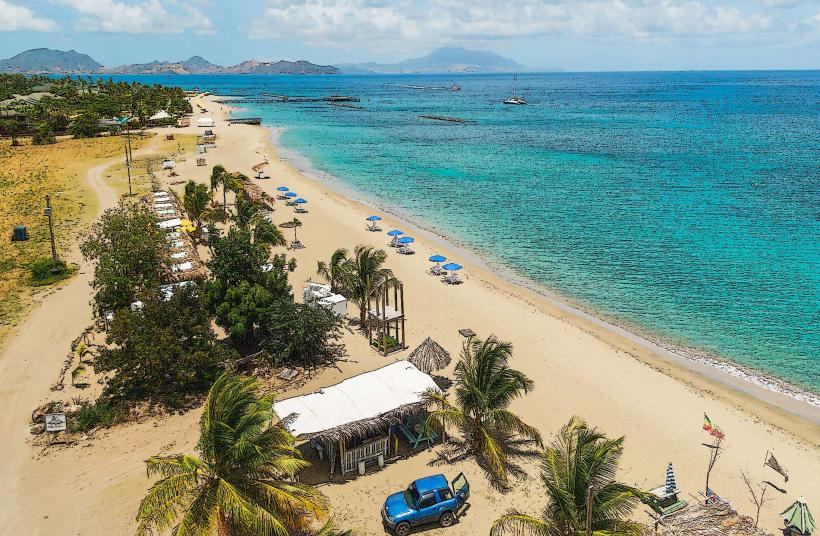Information
Landmark: Saint Kitts IslandCity: Basseterre
Country: Saint Kitts and Nevis
Continent: North America
Saint Kitts Island, Basseterre, Saint Kitts and Nevis, North America
Overview
Saint Kitts Island, the bigger of the two that form the Federation of Saint Kitts and Nevis, sits in the warm blue waters of the Caribbean Sea and belongs to the Lesser Antilles archipelago, as well as saint Kitts, with its emerald hills, lively music, and deep-rooted past, has long drawn travelers looking for a mix of breathtaking scenery, a dash of adventure, and stories etched into every cobblestone street.On Saint Kitts Island, steep green ridges rise in the middle, where a central mountain range cuts straight through the land, likewise mount Liamuiga, the island’s tallest peak, is a sleeping volcano that climbs 1,156 meters-about 3,792 feet-above the sea, its shadowy slopes often hidden by drifting clouds.The island is ringed with beaches, from quiet stretches of soft golden sand to jagged cliffs where waves crash hard against the rocks, subsequently the island stretches about 23 miles (37 kilometers) from end to end and spans 5 miles (8 kilometers) across, miniature enough to cross in a morning drive yet packed with shifting scenery-from rocky cliffs to dense green forests.Saint Kitts is split into several parishes, and its capital, Basseterre, sits on the island’s breezy southwestern coast, to boot crystal-clear water wraps around the island, home to a dazzling variety of marine life, from darting rainbow fish to languid-gliding sea turtles, drawing visitors for snorkeling, diving, and sailing.The island basks in a warm, tropical climate, much like the rest of the Caribbean, with humid mornings and sea breezes in the afternoon, in turn on Saint Kitts, the air stays balmy at about 27°C (81°F), and the warmth never really lets up-even in January, you can feel the sun on your shoulders.From May to November, rain clouds linger and the air feels heavy; December to April brings luminous skies and dry, dusty breezes, alternatively on Saint Kitts, a steady breeze sweeps the coastline, taking the edge off the heat and carrying the faint scent of salt, a little Hurricanes sometimes sweep across the island, especially in the wet season when the air feels heavy and the sea churns, alternatively saint Kitts’ story stretches back to 1493, when Christopher Columbus first set eyes on its green hills and sparkling shoreline.At first, the Kalinhago and Carib peoples called the island home, fishing from its rocky coves, until the French arrived to colonize it in the early 1600s, also in 1623, the British set up their first lasting colony on Saint Kitts, planting the Union Jack in the island’s warm, salt-scented air and marking the start of Britain’s presence in the Caribbean.In the colonial era, Saint Kitts rose to prominence in the sugar trade, its hills and plains striped with sprawling cane plantations, consequently sugar kept the island’s economy alive, its fields thick with cane, and the work fell almost entirely on the backs of enslaved Africans, fairly Saint Kitts was a key hub in the transatlantic slave trade, its docks once crowded with ships unloading shackled captives to work the sugar plantations that fueled the Caribbean economy, in conjunction with on September 19, 1983, Saint Kitts broke from British rule and stood on its own, joining with Nevis to form a sovereign federation, for the most part The country runs as a constitutional monarchy, with the British monarch as head of state, a Governor-General standing in on their behalf, and a locally elected Prime Minister steering the government, in turn for years, Saint Kitts relied on sugar as the backbone of its economy, but when the cane fields fell quiet, the island turned to fresh sources of income-tourism, petite-scale farming, and a growing financial services sector.Tourism keeps the economy strong, drawing crowds for the island’s golden beaches, soft breezes, and centuries-historic landmarks, and saint Kitts is also building a thriving offshore finance hub, where international banks, insurance providers, and investment firms set up shop along its sunlit harbor streets.The government’s been pushing the island’s real estate growth, especially high-end resorts, sleek condominiums, and quiet residential enclaves where palm trees sway in the breeze, and farming still matters to the island’s economy, but sugar fields have mostly given way to rows of bananas, ripe mango trees, and patches of fresh vegetables, moderately Saint Kitts also runs a modest livestock trade, raising poultry, goats, and cattle-hens clucking in dusty yards, goats grazing along the hillsides, simultaneously in Saint Kitts, culture runs deep-rooted in colonial history, enriched by African heritage, and glowing with Caribbean rhythms that spill from steel drums in the streets, moderately The island pulses with music, from the quick beat of calypso drums to the smooth sway of soca and the deep rhythm of reggae, simultaneously each December and January, the island bursts to life for Carnival, a beloved tradition with glowing parades, pounding drums, swirling dancers, and costumes glittering like jewels under the sun, maybe Saint Kitts’ food tells the story of its mix of cultures, bringing together African, European, and Caribbean flavors-like spicy stews alongside buttery pastries, at the same time favorites on the menu include saltfish and fungi-salty cured fish paired with a warm, cornmeal dumpling-and goat water, a rich, languid-simmered stew brimming with tender goat meat.The island’s proud of its long rum-making tradition, and you can still smell the sweet molasses drifting from several local distilleries that craft bottles famous around the world, in addition saint Kitts boasts a wealth of historical and natural sights that pull in travelers from across the globe, including Brimstone Hill Fortress-a UNESCO World Heritage Site where the stone ramparts rise high above the island, giving sweeping views of the turquoise sea.It’s among the most famous sights on Saint Kitts, rising above the island like a dim stone crown, in turn basseterre, the capital, blends weathered colonial buildings, quiet historic squares, and the buzz of modern shops.Actually, Visitors can wander through Independence Square, step inside the National Museum, and circle The Circus-a lively roundabout modeled after London’s Piccadilly, complete with radiant lights and bustling crowds, as well as the St, generally Kitts Scenic Railway carries you in a rumbling, open-air car around the island, where you’ll watch turquoise waves crash along the coast, mountains rise in the distance, and ancient sugar plantations drift past your window, also mount Liamuiga, the island’s tallest peak, is a sleeping volcano where hikers follow winding trails to sweeping views of Saint Kitts and the nearby islands, with the sea stretching blue to the horizon, sort of If I’m being honest, Frigate Bay draws crowds with its soft golden sand, gentle waves lapping at the shore, and a nightlife that hums long after sunset, in conjunction with it’s the perfect spot to swim in clear, cool water, stretch out in the sun, and end the day tasting fresh seafood at a lively bar.As far as I can tell, From Timothy Hill, you can take in sweeping views of the Caribbean’s turquoise waters on one side and the deep blue Atlantic on the other, with the island’s southern peninsula stretching out like a ribbon between them, in addition nevis Peak rises from the heart of Nevis, but you can spot its green slopes from across the water in Saint Kitts, a striking landmark against the island’s blue sky.The hiking trails climb toward the summit, where you can take in sweeping views of the valley and the distant blue hills, in turn in Saint Kitts, you can fly in or sail right up to the harbor, making it easy to reach by both air and sea.The Robert L, as a result rocked gently in the harbor, its paint faded by years of salt and sun.In Basseterre, Bradshaw International Airport serves as the island’s main gateway, with flights linking travelers to nearby Caribbean islands, the United States, and Europe, where you might step off the plane into cool morning air, therefore the island’s easy to get around, with smooth roads winding past vivid storefronts and plenty of ways to venture-taxis at the curb, buses rumbling through town.Cruise ships stream into the Port Zante terminal in Basseterre, one of the Caribbean’s busiest hubs, making Saint Kitts a favorite stop where visitors spill onto the pier under the warm island sun, moreover ferries run between Saint Kitts and Nevis, carrying passengers back and forth each day, the salt air sharp on the breeze.In conclusion, Saint Kitts Island offers a rare mix of rich history, from crumbling stone forts to quiet streets where the past seems to linger.
Author: Tourist Landmarks
Date: 2025-09-14

